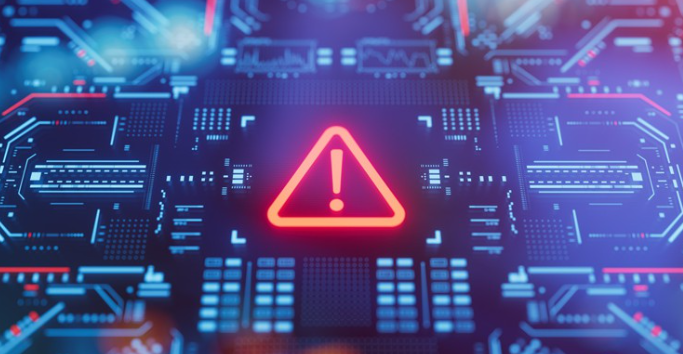On April 15, 2025, the cybersecurity world held its breath: the Common Vulnerabilities and Exposures (CVE) program, the backbone of global vulnerability tracking, was hours from losing U.S. funding. Then, in a last-second save, the Cybersecurity and Infrastructure Security Agency (CISA) extended its contract with MITRE, keeping the 25-year-old database alive. But with a new CVE Foundation rising and Trump’s budget axe looming, what’s next for the system that keeps your tech safe? Tech4Get’s breaking down the CVE funding drama—why it matters, what’s shaky, and how U.S. users can stay secure.

The CVE Program: Your Cybersecurity Lifeline
Think of the CVE as the internet’s 911 for software flaws. For 25 years, it’s assigned unique IDs to vulnerabilities—like CVE-2025-31200 in iOS 18.4.1—helping everyone from Apple to your local IT guy track and fix threats. Used by 80% of U.S. businesses (per 2024 cybersecurity stats), governments, and global researchers, it’s the gold standard for staying ahead of hackers. So, when MITRE warned on April 15 that its Department of Homeland Security (DHS) contract would lapse, panic hit. Forbes reported a potential “deterioration” of national vulnerability databases, delayed alerts, and chaos for incident response teams. Translation: your apps, banks, and even power grids could’ve been at risk.
CISA’s Last-Minute Heroics
Cue the dramatic music. Hours before the April 16 deadline, CISA swooped in, extending MITRE’s contract to “ensure no lapse in critical CVE services,” per a spokesperson to Reuters. The move, confirmed by Nextgov, came after a firestorm of industry backlash—think Cybersecurity Dive quoting firms like Fortinet freaking out over delayed vulnerability reports. Yosry Barsoum, MITRE’s cybersecurity VP, thanked the global cyber community’s “overwhelming support” on X, where users like
@callum_codes had called the cut “bad news.” The Register adds the extension lasts six months, until October 2025, buying time for a long-term fix. Crisis averted—for now.
Why the Close Call? Blame Politics
Why was the CVE on the chopping block? Forbes points to Trump’s cost-cutting drive, with Homeland Security Secretary Kristi Noem pushing to shrink CISA’s budget amid GOP claims of 2020 election “censorship.” Nextgov notes CISA’s already losing other contracts, with insiders reporting terminations left and right. The CVE, funded solely by the U.S. government, is a juicy target—its reliance on one sponsor is “its biggest vulnerability,” says Andy Swift of Six Degrees. X posts echoed the fear, with
@syedaquib77 warning the cuts sent the sector into “panic mode.” For U.S. users, this isn’t just bureaucracy—it’s a wake-up call that your cybersecurity hinges on political games.
Enter the CVE Foundation
Here’s the plot twist: part of the CVE Board isn’t waiting for another scare. On April 16, they launched the CVE Foundation, a new body to run the program independently, per Reuters. Why? The Board’s fed up with the “sustainability and neutrality” risks of U.S.-only funding, especially for a global resource. Dark Reading says the Foundation’s eyeing private sector cash and allies like the EU and Japan, but keeping it neutral is tricky. Imagine if a single tech giant—like Google or Microsoft—took over. Forbes quotes Matt Saunders warning about “inevitable concerns” of private control. For now, the Foundation’s a plan B, but it’s got U.S. IT pros buzzing about the future.
What Should You Do?
The CVE’s safe for now, but don’t get comfy. Forbes and experts have your back with these steps:
- Diversify Threat Intel: Lean on CISA’s Known Exploited Vulnerabilities (KEV) list, the National Vulnerability Database (NVD), and vendor feeds like Microsoft’s.
- Patch Fast: Stay updated—think iOS 18.4.1 for CVE-2025-31200, flagged by CISA as actively exploited.
- Watch the Foundation: Follow @CVEorg on X for updates on the new body’s plans.
- Push for Funding: U.S. businesses, nudge your industry groups to support public-private CVE funding, says Jamie Akhtar of CyberSmart. With 60% of U.S. firms hit by ransomware in 2024 (per stats), a wobbly CVE could mean more breaches. Act now to stay ahead.
The CVE’s Future Hangs in the Balance
The CVE funding scare of 2025 was a heart-stopper, but CISA’s save and the CVE Foundation’s rise show the fight’s not over. For U.S. users, from gamers to CEOs, this saga’s a reminder: cybersecurity’s only as strong as its weakest link. Tech4Get’s got your back, tracking every twist in this tech thriller. Worried about the next vuln? Share your thoughts in the comments and let’s keep the internet safe!



